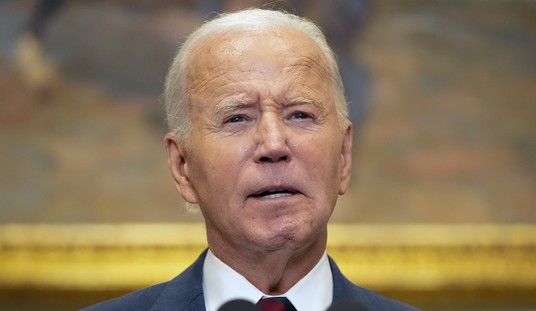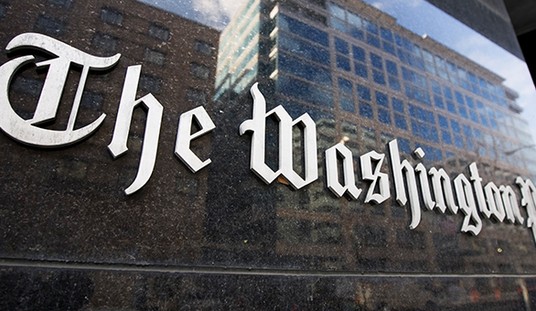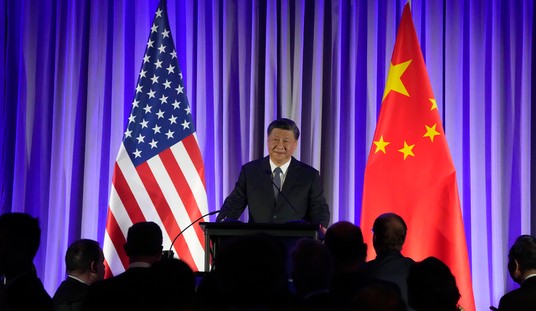Reuters reports that President Obama has virtually admitted that the Copenhagen conference was a failure.
President Barack Obama said on Wednesday that disappointment over the outcome of the Copenhagen climate change summit was justified, hardening a widespread verdict that the conference had been a failure.
“I think that people are justified in being disappointed about the outcome in Copenhagen,” he said in an interview with PBS Newshour. “What I said was essentially that rather than see a complete collapse in Copenhagen, in which nothing at all got done and would have been a huge backward step, at least we kind of held ground and there wasn’t too much backsliding from where we were.”
Sweden has labeled the accord Obama helped broker a disaster for the environment, British Prime Minister Gordon Brown said the summit was “at best flawed and at worst chaotic,” and climate change advocates have been even more scathing in their criticism.
That’s not the way he presented it when he flew back in supposed triumph from Copenhagen. Using terms like “unprecedented”, “breakthrough” and “beginning of a new era”, Obama speaking in Copenhagen seemed to be describing something utterly different from the result he now believes emerged.
[youtube MKOANjv6htw]
The President probably understood, even as he spoke these words, that the conference had ended in a catastrophe for those who had organized it. Of course there is the possibility that he didn’t realize it was a failure until he thought about it more recently. But the balance of probability is that he spun the setback as a victory because he could not admit so thorough a defeat. What else ain’t so?
It’s not the “Climate Change” miscalculations that are really scary. If the foreign policy judgments are of the same quality then 2010 is going to be an interesting year. Michael Totten reports that Assad, after having been defanged by GWB, is now back as the strong horse. And he’s causing problems in Lebanon.
Hezbollah and its sponsors in Tehran and Damascus have forced Hariri to do a number of things lately — to give it veto power in his government’s cabinet and to surrender to its continuing existence as a warmongering militia that threatens to blow up the country again by picking fights with the Israelis.
Hariri and his allies in parliament resisted an extraordinary amount of pressure on these points for months before caving in, but cave in they did. They didn’t have much choice. … No one has Hariri’s or Lebanon’s back, not anymore. He and his allies in the “March 14″ coalition have sensed this for some time, which is why Druze leader Walid Jumblatt has grudgingly softened his opposition to Assad and Hezbollah lately. When Hariri went to Damascus, everyone in the country, aside from useless newswire reporters, understood it meant Syria has re-emerged as the strong horse in Lebanon.
Part of the reason for Assad’s resurgence is that he has been let out of his cage by the administration, which has decided to “engage” him, rather than contain him. Totten continues:
The U.S. and France did effectively isolate Assad with Saudi assistance when George W. Bush and Jacques Chirac were in charge, but presidents Barack Obama and Nicolas Sarkozy think they can save the Middle East by “engaging” its most toxic leaders. Syria, therefore, is no longer isolated. Lebanon’s little anti-Syrian government doesn’t stand a chance under these circumstances, especially not when Hezbollah is the dominant military power in the country. …
It did make the Syrians behave a bit for a while, but now the U.S., France, and Saudi Arabia are bringing Assad in from the cold and giving him cocoa. His influence, naturally, is rising again, in Lebanon and everywhere else. That’s good news for Hezbollah, of course, which means it’s also good news for Iran. It’s bad news for the Lebanese, the Americans, the French, the Saudis, and the Israelis. None of this was inevitable, but — in Lebanon, at least — it was predictable.
“None of this was inevitable”. But it’s reasonable to ask whether the possible incompetence or self-delusion of the current administration is causing a number of self-inflicted wounds. From the stimulus, to the Olympics, to Copenhagen, to the agonizing delays in Afghan policy and its ambiguous result, to health care “reform” and beyond, the administration is showing the world its moves. And the results so far have been far from impressive.
The real significance of Copenhagen may be that it provides a transparent proxy indicator of the quality of the administration’s management. Unlike other policies whose outcomes are still being awaited or are invisible to the public, Copenhagen was a public demonstration of the administration’s prowess. It’s results are visible to all. Even though President Obama tried to put the best construction on the events, they are clearly unflattering. And yet he is in the process of re-architecturing American security, diplomatic and economic policy. He is not only re-tiling the floor, he is re-setting the foundations. How good will he be?
One of the most interesting self-inflicted catastrophes in World War 2 involved the loss of the Japanese fleet carrier Taiho. It had been moderately damaged by a torpedo from the USS Albacore, but the damage hardly slowed it. What did the Taiho in was inept damage control. Fuel from cracked fuel lines caused a buildup of vapor in certain compartments. Anxious to get rid of it, the damage control people pumped the fumes into the ships ventilation system.
Taiho’s chief damage control officer eventually ordered the ship’s general ventilation system switched to full capacity and, where possible, all doors and hatches opened to try and rid the ship of fumes. This resulted in saturation of areas previously unexposed to the vapors and increased the chances of accidental or spontaneous ignition exponentially. Taihō became a floating time bomb …
About 1430 that afternoon, six and a half hours after the initial torpedo hit, Taihō was jolted by a severe explosion. A senior staff officer on the bridge saw the flight deck heave up. The sides blew out. Taihō dropped out of formation and began to settle in the water, clearly doomed. Though Admiral Ozawa wanted to go down with the ship, his staff prevailed on him to survive and to shift his quarters to the cruiser Haguro. Taking the Emperor’s portrait, Ozawa transferred to Haguro by destroyer. After he left, Taihō was torn by a second thunderous explosion and sank stern first at 1628, carrying down 1,650 officers and men out of a complement of 2,150.
Let’s hope the administration’s fixes work a little better.










Join the conversation as a VIP Member